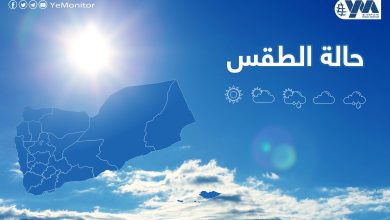
Yemen Monitor/Reports Unit/private:
The statements of the military advisor to the Supreme Leader and former commander of the Iranian Revolutionary Guard focused on the country’s strategic depth, which he said should be increased to 5,000 km to include the Red Sea. These are rare statements about expanding the country’s strategic reach to include most of the countries of the region and shipping lanes.
Yahya Rahim Safavi said that “Iran’s strategic depth should be increased to 5,000 kilometers, including the Mediterranean Sea and the Red Sea.” He also said that the attacks in the Red Sea will not stop, increasing tensions in the region, which is now closer to explosion with the increase in international mobilization in the Red Sea to confront the Houthis.
What exactly do the new Iranian ideas mean?
Abdul Rasoul Divsalar, an expert on Iranian foreign and defense policy, says: Considering the Mediterranean Sea as Iran’s strategic defensive depth is not new. However, the Red Sea has not traditionally enjoyed such a status. The inclusion of the Red Sea in Iran’s strategic depth indicates that Tehran will formulate long-term strategic plans to strengthen its presence there.
He added: The direct result will be the increasing strategic importance of the Houthis to Tehran. I have noticed this trend since 2015, when the Houthis became a strategic partner of Iran after the Iranian militarization of Saudi operations in Yemen.
More.. Will the US Launch a Ground Operation in Western Yemen After the Shipwreck? Experts Analyze
Expanding influence and strategic reach
Ibrahim Jalal, a Yemeni researcher at the Middle East Institute, believes that Safavi’s public statement confirms what many have been saying for a long time about “Tehran’s strategic ambition to establish a long-term presence in the Red Sea through the Houthis to strengthen its areas of influence and extend its control over the Arabian Peninsula, East and North Africa, and maritime trade and security in general”.
Jalal adds: “For Iran, expanding its influence and strategic reach in the Red Sea and Bab al-Mandab region allows more influence, threat, and control over key shipping lanes from Hormuz to the Suez Canal and Gibraltar in the long term. This would further diversify Iran’s influence towards the United States and the countries bordering the Red Sea, including Saudi Arabia, Jordan, and Egypt, and change the calculations of threat, cooperation, and competition”.
Jalal points out that “a unified Red Sea strategy will also allow Tehran to expand its trade routes to circumvent Western sanctions, a move that can also be seen as a strategic hedge against future international trade restrictions or embargoes”.
More.. (Exclusive) Inside the Houthi demonstrations in Sana’a.. Support for Gaza and rejection of the group’s authority
5,000 km
Jalal points out that: With the militarization of the Red Sea and the Gulf of Aden increasing as a result of Houthi attacks supported by the Iranian Revolutionary Guard on global maritime trade, Iran has an active interest in monitoring, confronting, and disrupting the activities of its opponents, but also ensuring a smoother flow of intelligence, weapons, and logistical support to its proxies.
He continued: The so-called expansion of strategic depth by 5,000 kilometers reaffirms Iran’s expansionist agenda and strategic ambitions for the next decade. This will be reflected in attempts to expand influence in the Horn of Africa and North Africa, exploit instability and civil unrest, and influence the security dynamics of connected areas and confront competitors. Two decades ago, illicit weapons were transferred from Iran to the Houthis via Midi in Yemen’s Hajjah governorate to establish a strategic proxy presence in the Red Sea.
Divsalar added: What is unclear in Safavi’s statements is whether the 5,000 kilometers extend beyond the Mediterranean to include a larger Mediterranean region. The latter case reveals Iran’s greater desire to engage in the security dynamics of Southern Europe.
He continued: If this is true, it will represent a new vision for strategic depth and will have serious consequences for European and Middle Eastern security. However, given the major constraints imposed by the Iranian Navy on its operations in the Mediterranean, I see such a possibility as unlikely in the near future.
More.. Exclusive- US aircraft carrier and its attack group are camping off Al-Hodeidah coasts
North Indian Ocean
Divsalar points to a broader strategy by Tehran, which has recently shown “greater interest in the affairs of the North Indian Ocean, and the Iranian Navy is working hard to highlight its power in those areas. The Indian Ocean will become more central to Tehran as a continuous presence in the Red Sea becomes a priority.”
However, Jalal believes that Iran’s strategy will require it to expand its presence or role in the Indian Ocean, Gulf of Aden, and Red Sea, and to link the Strait of Hormuz to the Suez Canal directly or through proxies, but it will also increase its investments in the Houthis. The Houthis have never been a cheaper investment for Iran in terms of strategic value.
Divsalar concludes: “It will be interesting to see how the concept of strategic depth or strategic defensive depth, which is one of the pillars of Iranian regional policy, evolves in the coming years.”




